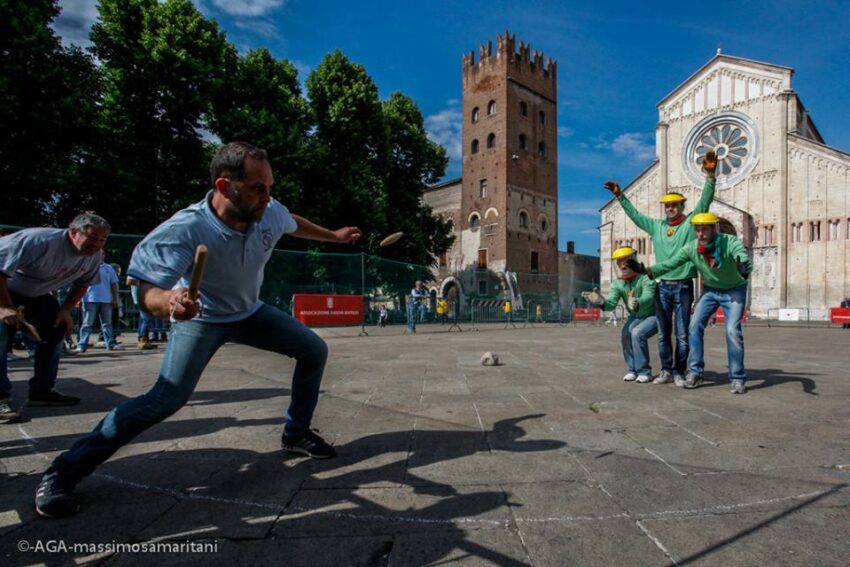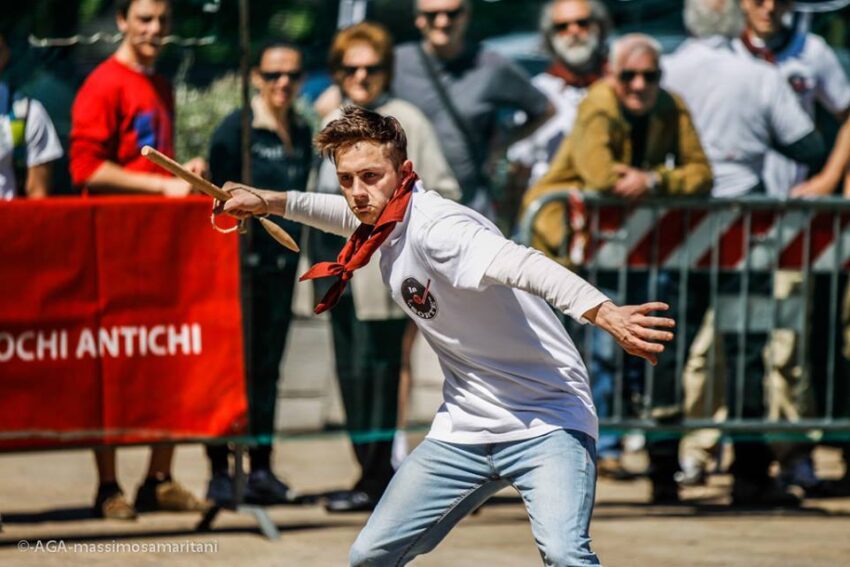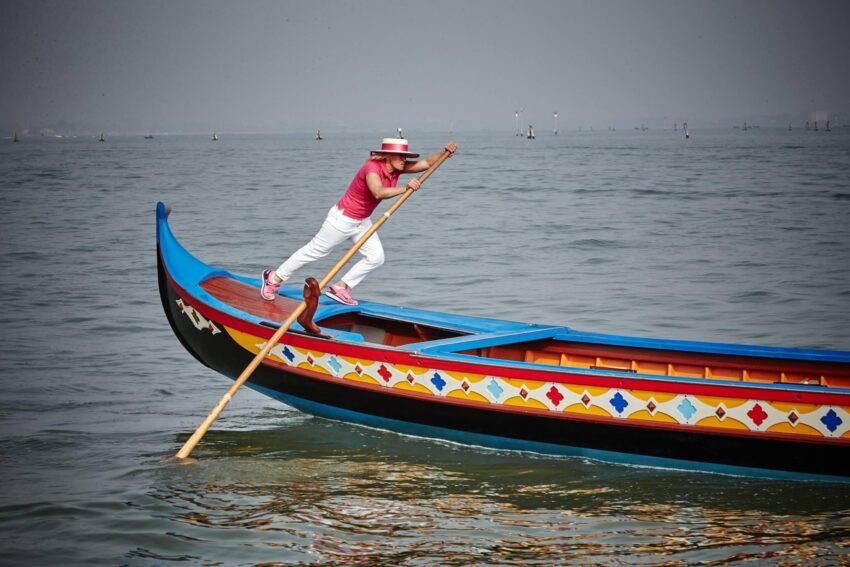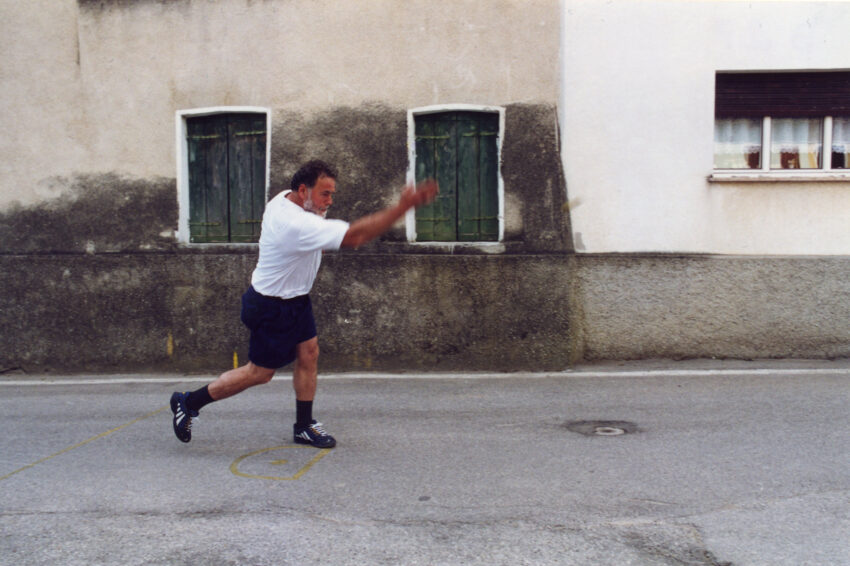Tocatì
“Tocatì” is an exclamation used by players of traditional games and sports of Veneto Region - meaning, in local language, “it’s your turn!”. It’s also the title of the annual sports and games festival in the city of Verona. And Tocatì is the title for the multinational programme of activities for the Safeguarding of traditional games and sports, selected in the UNESCO Register of Good Safeguarding programmes in 2022.

Ludic experienecs and tales in Veneto landscapes
Taking into account the objectives of the Living Heritage Journeys project, the AGA-tocati pilot project has selected three regional (Veneto) ludic practices which, between urban and rural contexts, express the relationship between living heritage expressions, the natural environment and cultural spaces and landscapes. The choice has taken into account the needs, aspirations and projects of the ICH communities - in our case traditional games and sports practitioners.
First of all, there are some groups/communities that practise s-ciànco - in Italian “Lippa”, a stick game practised both within the city walls of Verona - a world heritage site - and in the rural and urban territories of its province. The game is found with its variations throughout Italy and around the world. It will allow us to investigate and enhance the presence of this living heritage in an urban context with a high tourist impact, connecting several groups in other contexts of the Verona area. During the “Tocatì, international festival of games in the street” in September every year, but also during other local events, as the “S-ciànco Torneo città di Verona”, the groups of practitioners/cultural communities put the urban space in action and motion, animating for some hours the local life. Is it possible to share this social energy, proposing new touristic experiences?
The second community identified plays a spherical game - (in Italian “sferistica – palla elastica”) - in an area of the Belluno mountains; a game that exists in different forms throughout Italy. This choice allows us to study the relationships between the streets and squares as cultural spaces of a pre-alpine community with its pastoral economy. Many traditional games have remained alive in small mountain communities. In these regions, tourism can be a way of tackling depopulation. It can also demonstrate the potential of living heritage as a tool for new or other forms of sustainable economic development.
Finally, going down towards the sea and the lagoon of Venice, we find the traditions of “Voga alla veneziana” standing rowing, which testify to the extraordinary human ability to adapt to the lagoon environment by living with and on the water. In a World Heritage Site city affected by over tourism, the Voga communities, part of the AGA and Tocatì network, represent an opportunity to study the limits of tourism development and seek new tourism experiences/models, based on the respect for the communities’ living heritage.
S-ciànco
The Traditional Game of S-ciànco, taking its name by the shorter of the two tools with which this stick game is played, is known in Italian by the name of “Lippa”. This game has very ancient origins: we can find some testimonies, inter alia, at the Petrum Ancient Egypt Museum in London, with some findings catalogued as ”lippe”, dating back to the XI/XII dynasty. The game is widely practised in many areas of Europe, North Africa and Asia. In Italy it is played in many regions, with different denominations from time to time: Rella in Milan, Nizza in Rome, Mazza e Pivezo in Naples, Ciärämèla in Pavia. Its diffusion makes this game a perfect tool for intercultural dialogue and cooperation.

Voga alla Veneziana
“Voga alla Veneziana” (lit.“Venetian rowing”) is a special technique of standing rowing developed in and around the Venice lagoon area, in which a single oarsman equipped with one or two oars may be sufficient to propel the boat forward. Each traditional boat has a certain number of rowing places and thus housings for the “forcole” (nogari or vògari). The absence at that time of pronounced wave motion, shallow waters, sandbanks, etc. imposed the flat bottom, without a keel, which is easy to maintain and in case of emergency allows the boat to be easily dry-docked on sandy shorelines. The need to be able to see well where there was sufficient seabed to sail forced rowing standing forward. The knowledge associated with this practice, therefore, speaks distinctly of the connection to the territory of origin of Voga. However, one can find similar traditions not only in Italy, in the Veneto and Lombardy region, but all over the world in similar environmental contexts.

Tò Vegna
Tò Vegna is a traditional game of the Belluno mountain territory, also named "La Bala" in the local language. Opponents throw a rubber ball at each other that can only be hit with certain parts of the body: from the hands to the elbows and from the feet to the knees. The name is derived from the ritual that precedes the beating: the one who beats warns "Tò" (take), the one who receives replies "Vegna" (come). The To' Vegna ludic community is close-knit and aware of the value of the practice: the value given to the cultural space of the game, represented by playing in the street, combines perfectly with the recovery of an old dairy (which has now become the "Milk Museum") central to the life and historical memory of the local community.

This pilot is realised by:
Leading partner: Associazione Giochi Antichi
Associated partners: Associazione Beni Italiani Patrimonio Mondiale, Istituto Centrale per il Patrimonio Immateriale, Veneto Region Cultural Heritage, Cultural Activities, and Sport Department, Comune di Verona, UNPLI, Confcommercio Verona, SIMBDEA, Verona Tourism Bureau, AEJeST and General Directorate Autonomy, Culture Lombardy Region